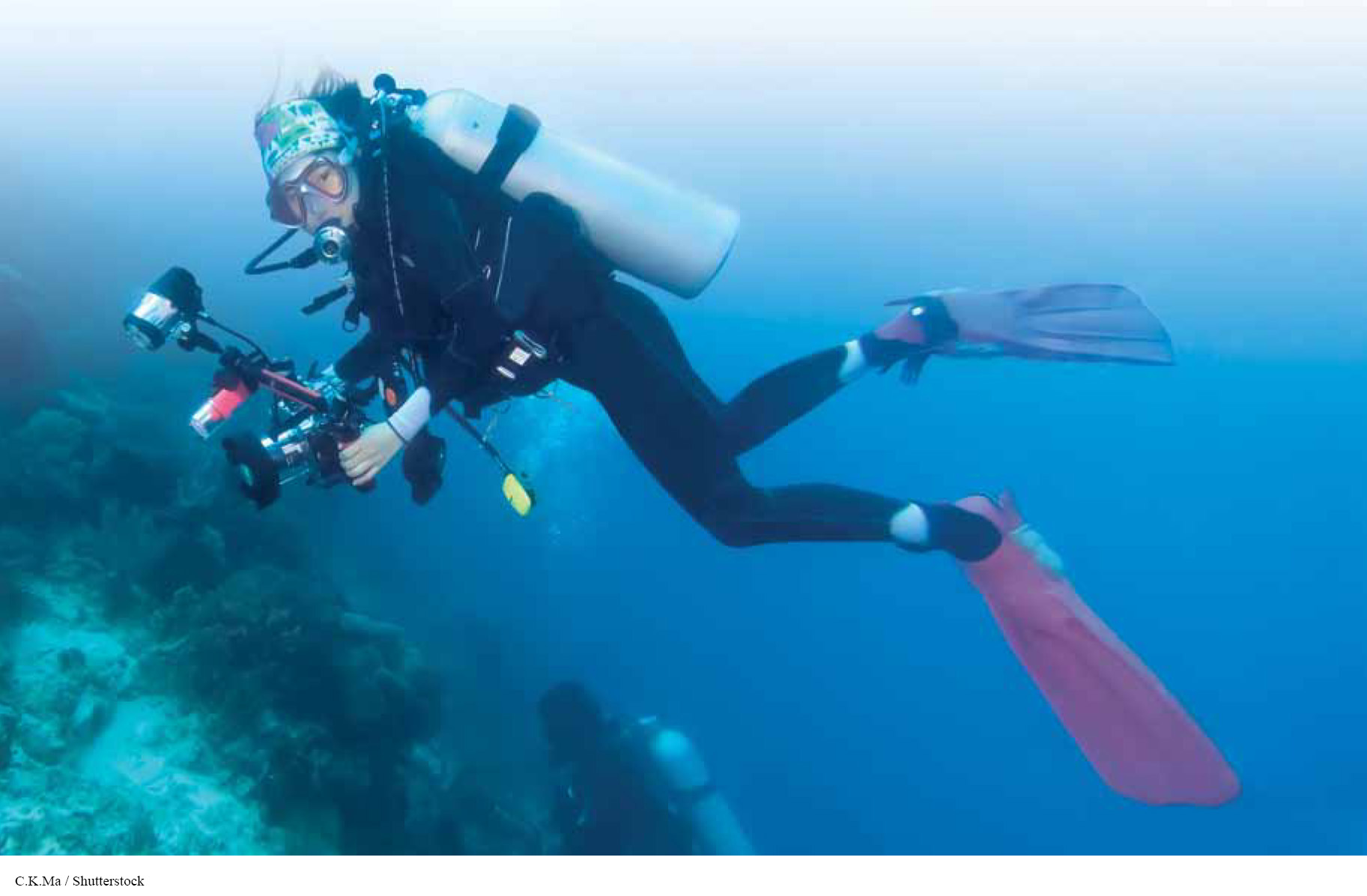KNOWLEDGE YOU CAN USE


Question 21.11
Q: What do scuba divers and champagne bottles have in common? Under high pressure, large amounts of a gas can be dissolved in fluid. This is why huge amounts of carbon dioxide can be present in a bottle of champagne. It is also what happens to divers who, with tremendous water pressure on their bodies, must breathe highly pressurized air in order for oxygen to dissolve in their bloodstream.
Question 21.12
Q: Why are bubbles bad news for divers? When a champagne bottle is uncorked, the pressure is suddenly released. Under low pressure, not nearly as much carbon dioxide can be held in the fluid, so it quickly bubbles out. Similarly, when a scuba diver returns too quickly to the surface, the pressure on the body is rapidly reduced, as is the capacity of the blood to hold gases. And, like champagne after the cork is popped, many gases in the diver’s blood—
Question 21.13
Q: What can you conclude about avoiding the bends? Just as the solution to opening a bottle of champagne without it bubbling over is to release the pressure very slowly by removing the cork slowly, a diver must reduce the pressure on his or her blood very slowly by rising gradually from the depths of the water. Alternatively, a diver can be placed in a chamber (called a hyperbaric chamber) to be gradually depressurized.

867